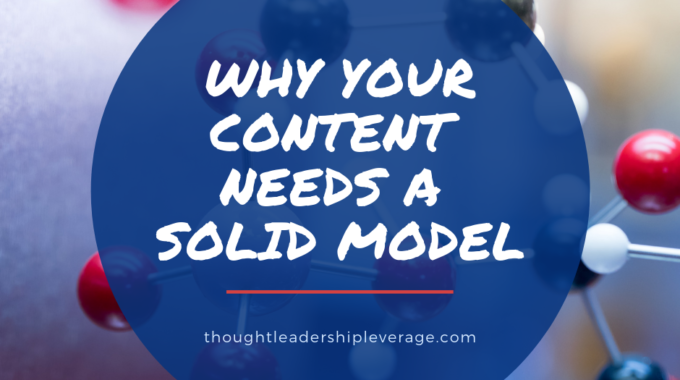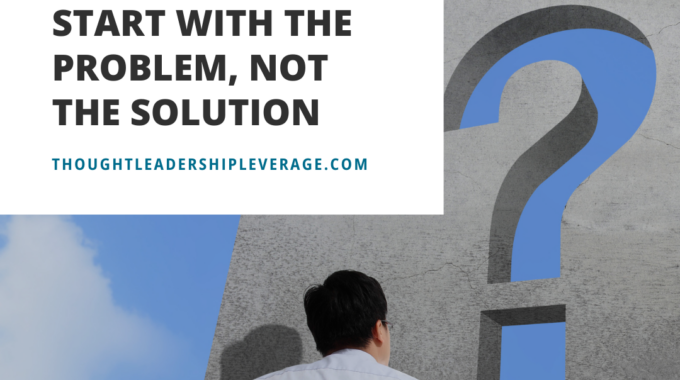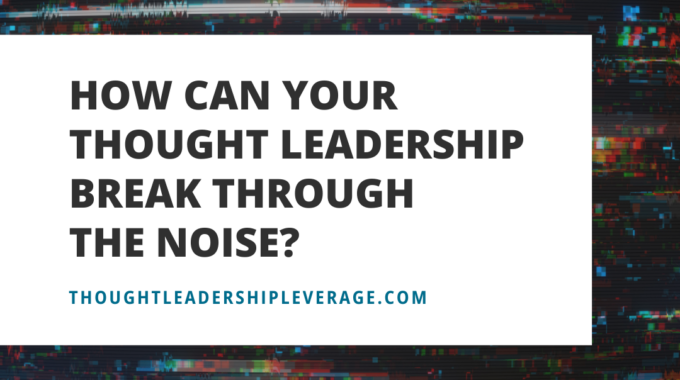Hey, thought leaders! I want to tell you about a powerful approach to thought leadership…
Why Your Content Needs a Solid Model
Your content is brilliant—perhaps life-changing—and solves a complex challenge in business. You’re proud of it, and ready to show the world! But, wait. You need one more thing: a solid content model.
Thought leadership content can be complex, and your target audience—whether it’s CEOs or front-line managers—all have very little free time. They’re busy. They won’t wade through a 750-page book. They won’t watch four-hour video lectures. And they won’t devote their weekends to study your blog posts.
It’s your responsibility to make your content simple and accessible for your learners. Learners need to know what your content is, and what it’s not. A model provides a framework to encompass the breadth and depth of your content, making it easier for them to understand.
But how do you build one?

First, think about the most important parts of your content. Distill those down to the absolute rock-bottom basics. As an expert, you could fill a library of books on your content, discussing it in massive breadth and depth, but that’s just not useful to a new learner. Think about it this way – if you were building a bridge, you might want it to look pretty, but you need it to be structurally sound. Learning is about what people need. Therefore, want to focus on essential pieces that get people from A to B as easily, clearly, and powerfully as possible.
Let’s face it, If Covey had written about the 70 Habits – or worse – The 700 Habits of Highly Effective People, the book would probably not done very well. Quite simply, if your process has tons of steps, your audience is going to run away, looking for something easier. Models organize your content, streamlining it and highlighting the essentials. When you create a model, it’s a reductive process, a combination of deep thinking and purposeful engineering.
To be effective, your model needs both simplicity and depth.
Start from clean cloth and dig into your intellectual attic, really drawing out the most relevant material – then, filter that down to the essentials. Ask yourself, “What do people absolutely need to know about my content? What must a learner do to master this material? What will help them the most?”
A content model focuses on the most important parts of your thought leadership, and helps learners grasp the basics quickly and simply. From there, a learner can move forward to discover the material’s complexity and depth – but if they can’t get started, they’ll never reach that point. With a model, they’ve got a handhold on your ideas – a bridge to walk on as they cross their river of problems.
Comments (1)
Comments are closed.





Great points. And completely agreed on. For example, we include “old audience thinking” and “new audience thinking” as end points in one or more “thought leadership vectors” to clarify how we are aiming to shape thinking in a particular market segment.
The clarification that adds has made a big difference in content planning, management, and production.
So we can personally attest to how important it is to drill down to the core essence, as I’m understanding you recommend.